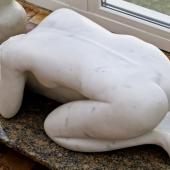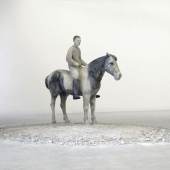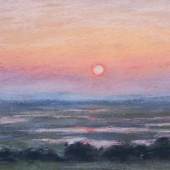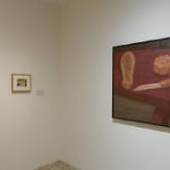ADOLPH GOTTLIE
ADOLPH GOTTLIEB. A RETROSPECTIVE
-
Ausstellung04.09.2010 - 09.01.2011
From September 4 to January 9, 2011 the Peggy Guggenheim Collection presents Adolph Gottlieb. A Retrospective, the first retrospective exhibition of this great American Abstract Expressionist painter to be shown in Italy. Like those previously dedicated to William Baziotes and Richard Pousette-Dart at the Peggy Guggenheim Collection, this exhibition brings to Italy a better understanding of a generation of New York artists that in the 1950s came to form American Abstract Expressionism. The origins of this movement in the 1940s is closely linked to the career of Peggy Guggenheim herself, and to her New York museum-gallery Art of This Century.
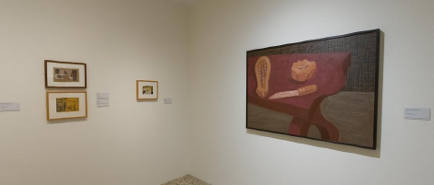
The exhibition has been organized in partnership with the Adolph and Esther Gottlieb Foundation, New York, which has lent numerous paintings and sculptures from its holdings. The exhibition also benefits from loans from the Museum Frieder Burda, Baden-Baden, the Solomon R. Guggenheim Museum, New York, the Musée national d‟art moderne (Centre Pompidou), Paris, the American Contemporary Art Gallery, Munich, and from several private collectors.
The career of Adolph Gottlieb (1903-1974), charismatic artist and thinker, is closely tied to that of other exponents of American Abstract Expressionism: for example, from the early 1930s he had firm friendships with Barnett Newman and Mark Rothko. Rothko shared with Gottlieb the quest for a new pictorial language based on personal artistic expression, and was a founding member with him of “The Ten” in 1935. In 1941 Gottlieb and Rothko together resolved to explore mythical and Jungian subject matter, thus initiating an important early phase of the nascent New York school of painters, and signalling for the first time an avant-garde that was independent of European prototypes. Again with Rothko, Gottlieb was the author of a now-historic letter to The New York Times of 13 June 1943, considered the first public statement of theories underlying what was later to be known as American Abstract Expressionism. In spring 1950 he organized a group of artists to protest the position of the Metropolitan Museum of Art towards contemporary American art, a group labeled „The Irascibles‟ by an article in The New York Herald Tribune, and presented to a much larger public through an iconic photograph by Nina Leen published in Life magazine. The photograph included Baziotes Willem de Kooning, Robert Motherwell, Newman, Pollock, Pousette-Dart, and Clyfford Still, as well as Gottlieb himself. In 1958-59, a touring exhibition of the Museum of Modern Art, that included Gottlieb and several of these same artists, was titled The New American Painting. However, as Sanford Hirsch, Executive Director of the Adolph and Esther Gottlieb Foundation, notes in the catalogue: “Gottlieb is labeled an Abstract Expressionist painter, and it is true that he was one of the founders of Abstract Expressionism and one of its major artists through the 1940s and 1950s. However, the term itself is too narrow to comprehend the breadth of Gottlieb‟s art and its impact on his colleagues, audiences, and the art that would follow.” This exhibition sets out to reveal the diversity of Gottlieb‟s production, and its ceaseless evolution, according to his own aphorism: “Different times require different images.”

